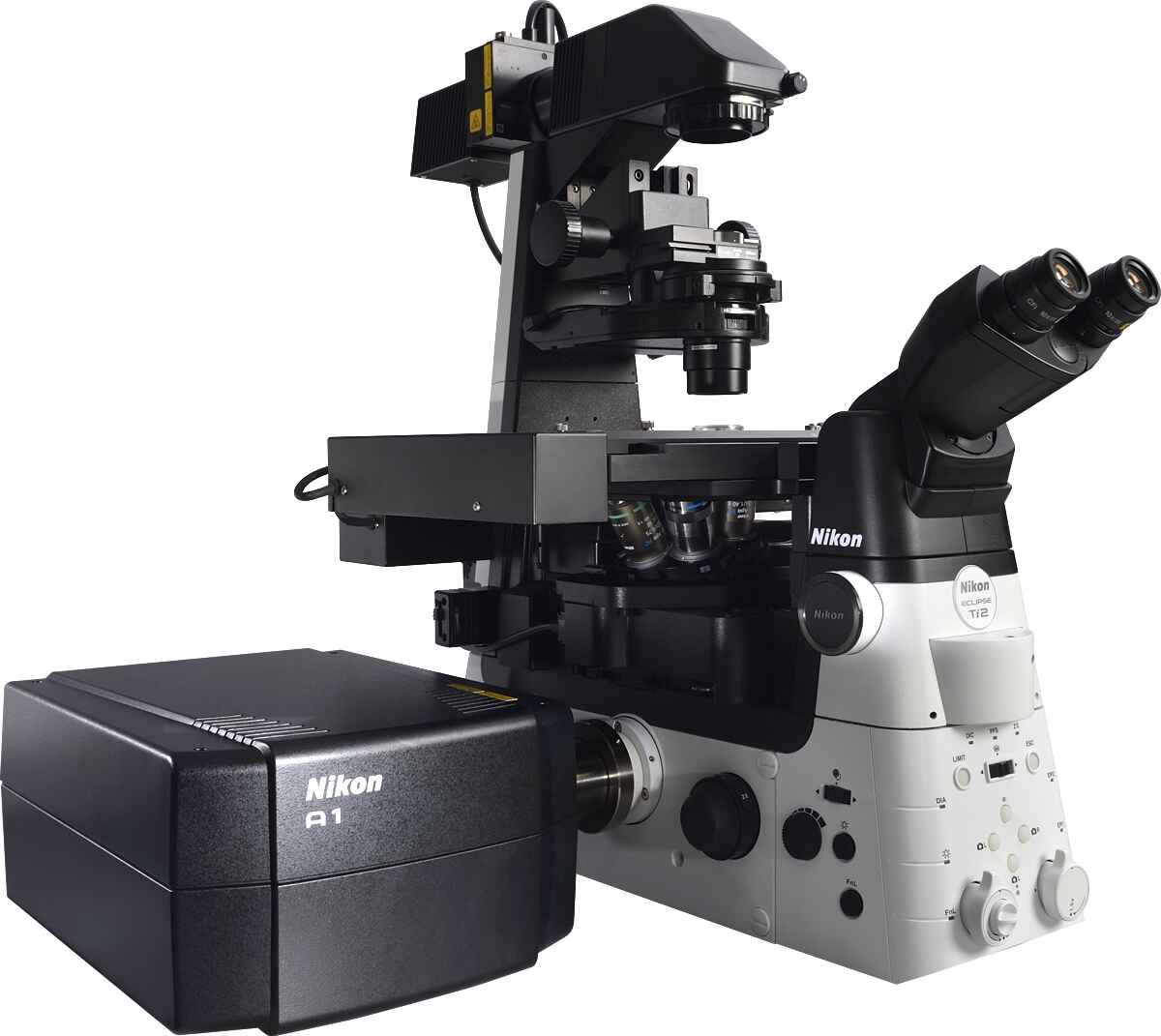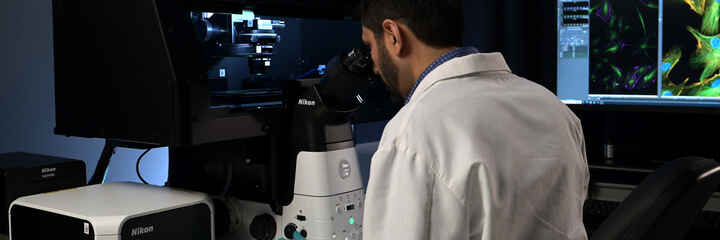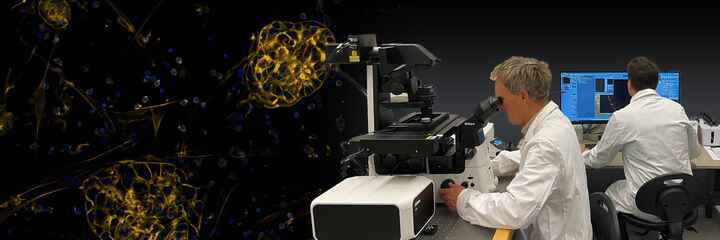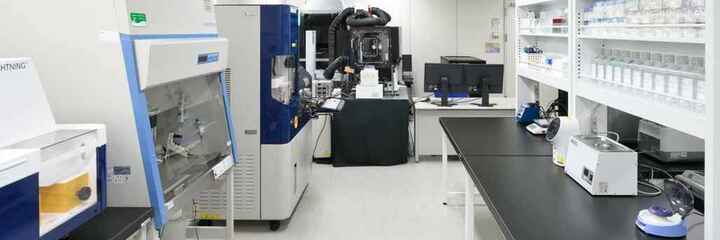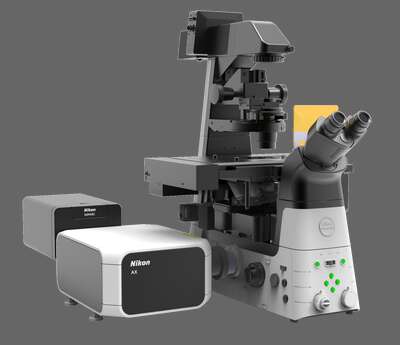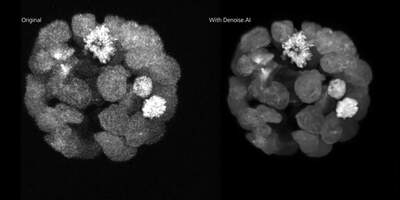
Image courtesy of Laurence Pelletier Lab, LTRI
A1 HD25 / A1R HD25
Confocal Microscope System
Discontinued Replaced by AX / AX R with NSPARC
A confocal microscope that captures images with a 25 mm field of view, nearly twice the area of conventional point scanners.
Capturing images of large samples such as tissues, organs and live model organisms requires both extending the detectable area of cellular responses and increasing image capture speed. The A1 HD25/A1R HD25 confocal microscope has the largest field of view (25 mm) in its field, enabling users to expand the limits of scientific research.

